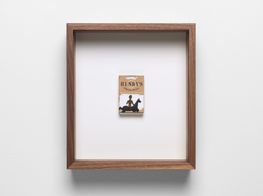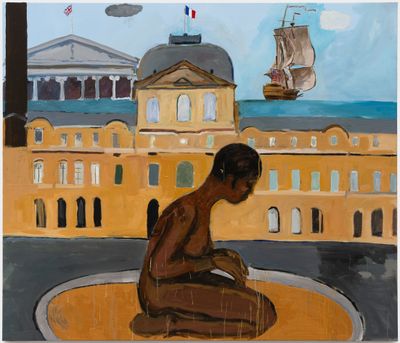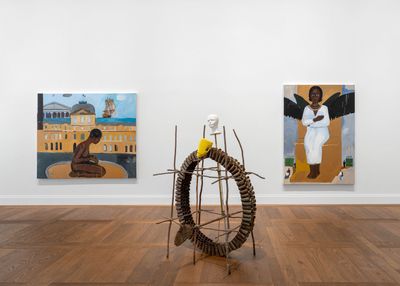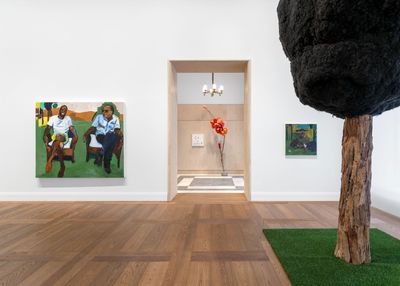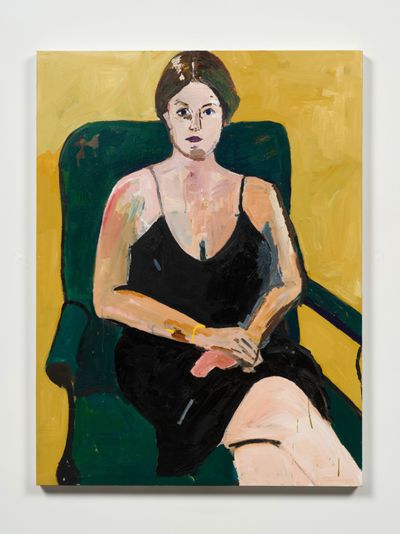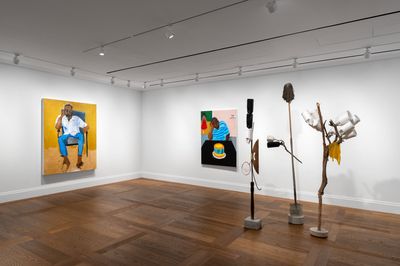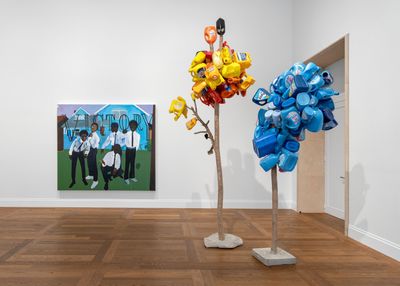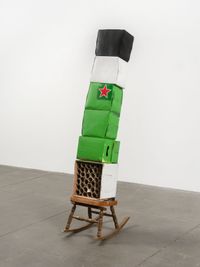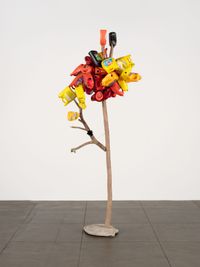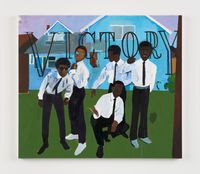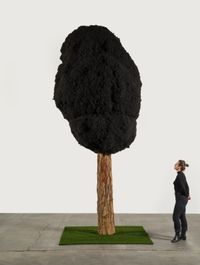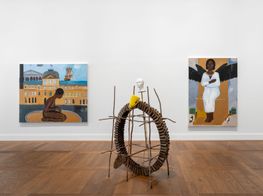Henry Taylor: From Cornbread to Sugar to Shit
Cora Taylor appeared in her son's 2008 painting, Cora, (cornbread), in the form of a freshly baked pan of cornbread sitting next to a can of Morton salt on a white stovetop. Henry Taylor recalls Cora would often say the refrain, 'from sugar to shit'. 'I know what she meant,' he said. 'A lot of things go to shit.'
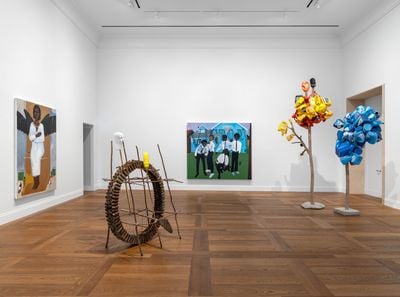
Exhibition view: Henry Taylor, From Sugar to Shit, Hauser & Wirth, Paris (14 October 2023–7 January 2024). © Henry Taylor. Courtesy the artist and Hauser & Wirth. Photo: Nicolas Brasseur.
Cora's words are forever memorialised in the title of Henry Taylor's solo show in Paris. From Sugar to Shit (14 October 2023–7 January 2024) is Hauser & Wirth's inaugural exhibition in their new Paris space and coincides with Taylor's major career survey, Henry Taylor: B Side at the Whitney Museum of American Art in New York. From Sugar to Shit is in a sense a parallel survey on a smaller scale—spread across the ground and first floors of an 1877 neoclassical hôtel particulier, it brings together recent paintings, drawings, and mixed-media sculptures.
In the summer Taylor spent two months on a residency in Paris, where he visited historical art collections including at the Musée D'Orsay and Louvre. The latter institution makes an appearance in the background of his large acrylic painting, got, get, gone, but don't you think you should give it back? (2023). In it, Taylor reimagines the enigmatic Josephine Baker—U.S.-born French dancer, actress, and civil rights activist—as a kneeling statue in a golden fountain before the Louvre and British Museum.
In the distant horizon is a slave ship at sea, invoking associations between the history of slavery, colonialism, and the collection of cultural objects and artworks by Western museums, many of which find themselves in the centre of fierce debates around repatriation, with their historical trajectories scrutinised. Sugar becomes emblematic of a broader historical struggle.
Such figurative paintings dominate From Sugar to Shit, giving an insight to the artist's care for empathic storytelling in an oeuvre that celebrates and immortalises the lives of many across time. Some 18 portraits are spread over the two floors, most of which are painted in acrylic on canvas. Taylor commands with confidence his use of paint and colour in a bold, expressive way, with fervent brushstrokes that deftly define his subjects and settings.
On the ground floor to the right of Josephine Baker is former U.S. first lady Michelle Obama rendered as a monument in Michelle (2023), deified with black wings and a white robe seated on a gold throne. Side by side, Taylor's depictions of Baker and Obama may be viewed as an ode to Black womanhood and excellence, immortalising their impact.
While Taylor is often associated with a lineage of American figurative painters including Kerry James Marshall, Alice Neel, and the late Noah Davis—who appears in the touching homage, Right hand, wing man, best friend, and all the above! (2023)—he prefers not to be categorised so rigidly. Taylor is someone who paints with a different energy, one that is present and empathic to both the process of depicting, and to the people depicted—a quality perhaps shaped by his decade-long experience as a psychiatric technician until the late 1990s.
Figures in Henry's portraits span celebrities, political and historical figures, and friends and family. Regardless of social stature, in each instance the treatment of the sitter is intimate and personal. Curator Laura Hoptman described how Taylor's subjects 'are always in situ.'
'He becomes a part of the fabric of the community, whether it is a corner we are talking about or even a city, and then incorporates that into his work as if he were a member of that community, as if he were in the neighbourhood,' Hoptman said.
Hung salon-style along one wall of the first floor are myriad portraits of individuals from Taylor's life in various scales and mediums. These include painter Mickalene Thomas; director Kasey Elise Walker; and actor-singer Ben Vereen. Directly to the left of Vereen is a tongue-in-cheek painting titled For those... who ask, 'Do you paint white people?' (2022). Depicting an unnamed white woman, Taylor answers back through his painting that, indeed, he does.
Text appears in several works, either in the background to portraits—as seen in no atou (2023), where the titular Tahitian slang phrase is inscribed in the background of a dejected birthday self-portrait—or standalone, as in the three-part oil stick drawing series, I got it from (2023), which constructs a simple serial narrative around ancestral lineage.
Aside from his paintings and drawings, sculptures populate the floors of From sugar to shit. On the ground floor is One tree per family (2023), standing at nearly five metres tall—another 'tree' configured with afro hair in the place of leaves, collected by the artist over time from barber shops.
In the same space is the tree-like assemblage Untitled (2022), which consists of empty laundry detergent bottles in shades of yellow, orange, and red, propped up by wooden branches. Similarly in Blue Me (2022), blue detergent bottles form a topiary atop a single erected branch.
The use of these everyday materials may pay homage to a history of sculpture and the readymade—possibly a reference to Marcel Duchamp's Bottle Rack (1914), or Glenn Ligon's neon Untitled (Bruise/Blues) (2014). Alternatively, the detergent bottles may point again towards his mother Cora, who cleaned houses for a living. In this way, Taylor's works assert the place of Black individuals and culture in the history of art, whether subtly or explicitly.
In the foyer, one of the first and last works seen when entering and leaving the exhibition is a black-and-white text painting that simply renders its title: Ça y est! (2023). The phrase translates into English as 'That's it!'—perhaps encapsulating the overall ethos of Taylor's oeuvre, in that what you see is all you get. —[O]

